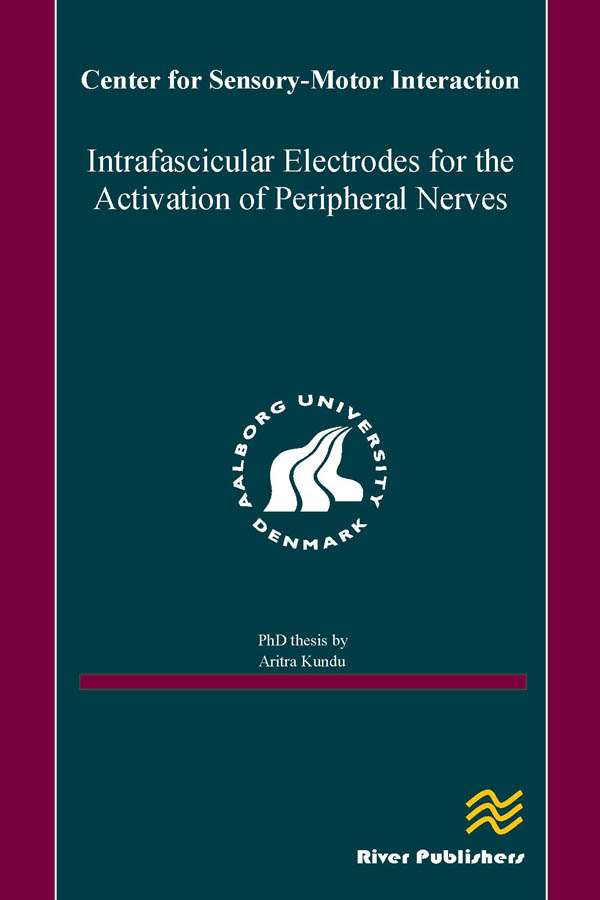River Publishers Series in open
Intrafascicular Electrodes for the Activation of Peripheral Nerves
Author: Aritra Kundu, Center for Sensory-Motor Interaction, Department of Health Science and Technology, Aalborg University, Denmark
ISBN: 9788792982636 (Hardback) e-ISBN: 9788792982629
Available: September 2013
The success of a neural electrode is often measured by its performance in the selective stimulation of or recording from individual fascicles within a peripheral nerve without damaging the nerve. Neural prostheses are limited by the availability of peripheral neural electrodes that can be used to record the user’s intention or to provide sensory feedback through functional electrical stimulation for an extended duration. Improvement in future neural prostheses may be achieved through the availability of multichannel, bidirectional neural interfaces, such as the transverse intrafascicular multichannel electrode (TIME). The aim of this thesis was to investigate the biofunctionality, biostability, and biosafety of the TIME in an animal model that bears a close neuroanatomical resemblance to the human. To this end, four research questions were formulated: 1) Is the pig model neuro-anatomically suitable for the simulation of the actions and reactions of a neural electrode in a large human-sized peripheral nerve? This question was addressed in study 1 in which a comparative morphology study was performed on the median and ulnar nerves of Danish landrace pigs and Göttingen mini-pigs. Nerve specimens were selected at different levels for analysis. The number of fascicles in each nerve was counted, and the fascicle diameters were measured. 2) How selective is the TIME compared to other intrafascicular electrodes, such as the thin-film longitudinal intrafascicular electrode (tfLIFE)? Study 2 was performed to address this question. A comparative stimulation selectivity study was performed in Danish Landrace pigs with the TIME and tfLIFE. Electrodes were implanted in the median nerve, and sequential electric stimulation was applied to individual contacts. The compound muscle action potentials of seven forelimb muscles were recorded to quantify muscle recruitment. 3) Is the TIME biostable and biofunctional for long-term implantation? This question was addressed in study 3 in which the chronic stimulation selectivity of the TIME was evaluated on Göttingen mini-pigs. 4) Does the TIME fulfil the criteria of biocompatibility and chronic stability? Study 4 was conducted to address this question. Immunohistological analysis was conducted on nerve specimens from chronic experiment pigs that had been implanted with TIMEs in study 3.
